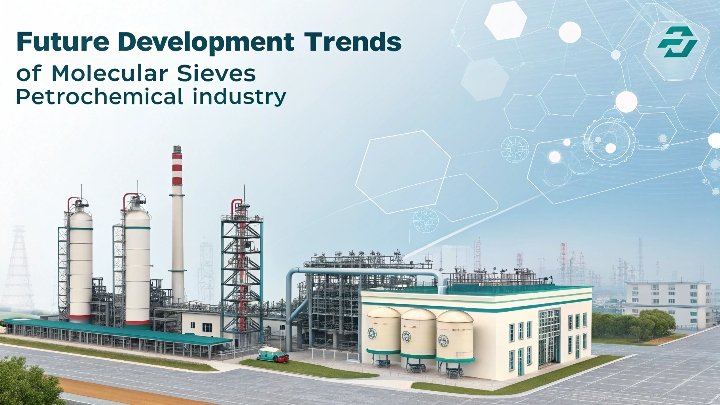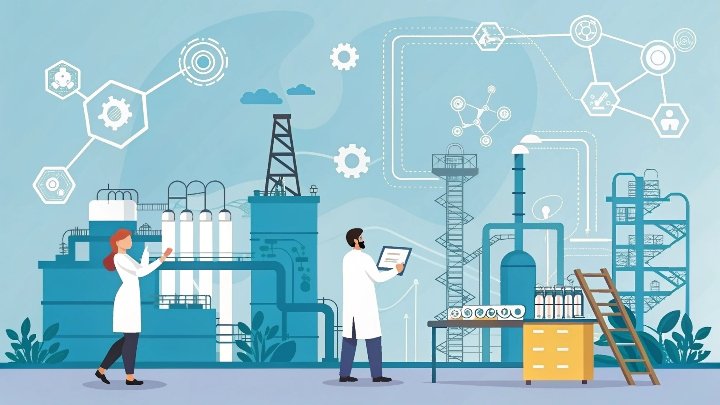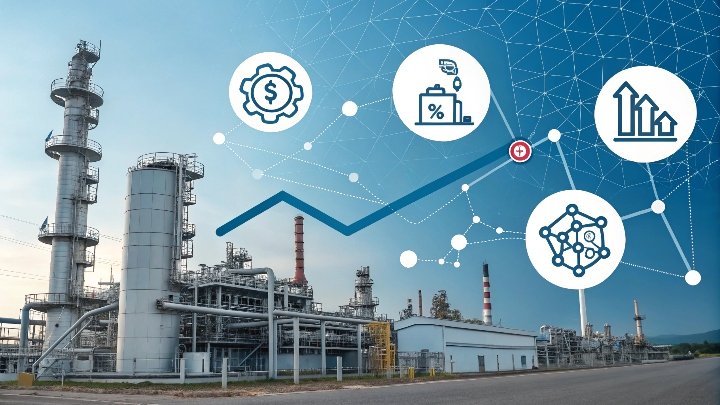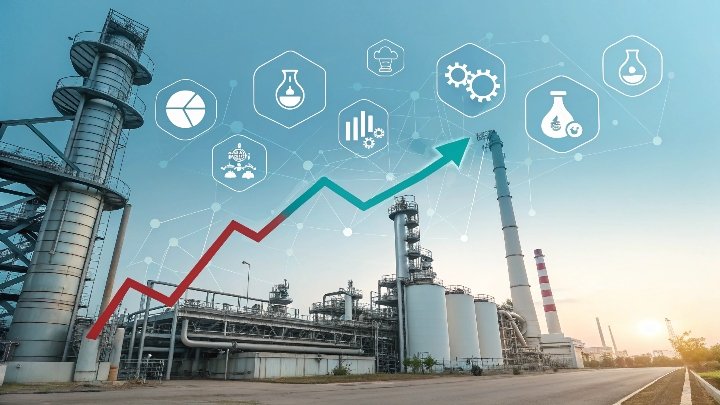I used to see molecular sieves as silent workhorses. But now, I see some big obstacles that could change everything, so I cannot wait to explore further.
Molecular sieves are the hidden champions of petrochemicals. They remove impurities, improve process efficiency, and help us push boundaries. Yet they face issues like high costs and energy-heavy regeneration. I believe these problems can become gateways to exciting breakthroughs.
I know it is tempting to gloss over the difficulties. However, real change starts when we look closer. I invite you to read on and find out how we can turn hurdles into stepping stones.
The Good, the Bad, and the Sieve-y: Current Challenges in Molecular Sieve Applications?
Every day, I deal with high costs, stability concerns, and large energy demands. These obstacles always show up at the worst times, pushing me to find creative fixes.
Molecular sieves can wear down under extreme temperatures and chemical exposures. They also require significant energy for regeneration. I have learned to see these drawbacks as sparks for future ideas.
A Closer Look at Present-Day Problems
I want to break down these challenges in a clear way. That helps me and others see how to move forward. Here are a few angles to consider:
-
Cost Pressures
I see cost as a big hurdle. The raw materials for high-quality molecular sieves are expensive. Processing them adds even more to the bill. Companies sometimes look for cheaper alternatives or use lower-grade materials. However, that leads to lower performance and even more money wasted in the long run. -
Stability Under Extreme Conditions
Petrochemical environments can be relentless. Temperatures can reach intense highs or lows. Corrosive chemicals move through production lines. If a molecular sieve cannot handle these factors, it breaks down, loses adsorption capacity, or contaminates the entire process. I have had to replace sieves sooner than expected because they could not endure these punishing conditions. -
Energy Demands for Regeneration
Regeneration often requires high temperatures or vacuum systems to remove adsorbed compounds. This step is vital, but it uses a huge amount of energy. That leads to bigger carbon footprints and increased operational expenses. In some cases, the downtime needed for regeneration slows production. This is frustrating when there are tight deadlines. -
Availability of Skilled Personnel
Trained professionals are necessary for managing molecular sieve systems. That means specialized knowledge in materials science, process engineering, and more. The learning curve is steep, so I see companies struggle to build strong in-house teams. This shortage of expertise can lead to mistakes in handling, which can harm the sieves.
Below is a quick summary of these primary challenges:
| Challenge | Description | Impact on Operations |
|---|---|---|
| High Costs | Expensive raw materials and processing | Raises production expenses |
| Stability Issues | Breakdown under extreme temperature or chemicals | Shortens lifespan, frequent replacements |
| Energy-Intensive Regeneration | High heat or vacuum needed for desorption | Increases energy costs, carbon footprint |
| Skilled Personnel Shortage | Need for specialized knowledge in materials and processes | Increases risk of errors, slows adoption of new methods |
I see these barriers as signs that we need better solutions. I believe that once we overcome them, molecular sieves will shine even brighter in petrochemicals. My own experiences with unexpected shutdowns and cost overruns have taught me the value of well-designed solutions. I also notice that sustainability demands continue to grow. New regulations and social pressures push us toward greener choices. That is why addressing these challenges is no longer optional. It is a must if we want to stay relevant.
I think every setback is a clue that reveals areas ripe for growth. I am excited to see how new materials, improved pore structures, and smarter process designs can reshape the industry. In the end, the challenges we see today will guide us toward more efficient and powerful solutions.
Innovation to the Rescue: Emerging Solutions for Molecular Sieve Limitations?
I have had enough of the old problems. It is time to discuss how new materials and designs can flip these challenges into wins.
Next-generation molecular sieves come from breakthroughs in materials science and smarter engineering. I see them as more robust and adaptive, ready to face real-world demands.
Building Tomorrow’s Sieves Today
I want to share some developments that give me hope. They span from bigger pore sizes to alternative regeneration strategies. I think they can make a big impact on the industry’s future.
1. Advanced Materials Research
Many labs focus on metal-organic frameworks (MOFs) and new zeolite compositions. These advanced materials can offer customized pore sizes that capture specific molecules. For instance, MOFs can be tuned at a molecular level. When I see these next-gen adsorbents at work, I am amazed by their precision. They also tend to function well under varied temperatures and pressures.
2. Smarter Pore Engineering
Traditional sieves often limit their pore openings to a narrow range. That works for some applications, but not all. Now, there is a move toward flexible or hierarchical pore structures. These allow a molecule to enter through a large channel and then proceed into a narrower space. This design can boost selectivity and reduce clogging. It also gives me a wider range of options for different operating conditions.
3. Alternative Regeneration Techniques
Conventional regeneration can be expensive and energy-heavy. Researchers are testing microwave or ultrasonic methods. These can cut the time and energy needed for desorption. Some have also tried vacuum swing adsorption with integrated heat recovery. Though these systems may need more initial investment, they lower long-term costs. I see them as promising ways to address the energy problem.
4. Coatings and Protective Layers
One simple yet effective idea is to coat molecular sieves. A protective layer can shield them from harsh chemicals or extreme temperatures. This approach keeps them stable for longer and reduces the frequency of replacement. Of course, you must ensure the coating does not block the pores. But with the right design, the coating can balance protection and performance.
Let me list these emerging solutions in a short table for clarity:
| Innovation | Key Feature | Potential Benefit |
|---|---|---|
| Metal-Organic Frameworks (MOFs) | Fine-tunable pore sizes | High selectivity, better stability |
| Hierarchical Pore Structures | Multiple pore sizes in one material | Reduced clogging, higher capacity |
| Microwave Regeneration | Faster, more efficient heating | Lower energy cost, reduced downtime |
| Protective Coatings | Added layer against extreme conditions | Prolonged sieve lifespan, less damage |
I see these innovations as puzzle pieces that fit together to create a more efficient adsorption process. When I talk to colleagues, I sense an eagerness to try these new approaches. But full-scale implementation still requires more data and practical experience. I also watch for changes in regulations and market demands, because these can push or slow adoption. Even so, I believe the future is bright. The industry has always adapted when faced with big challenges, and molecular sieve technology is no exception. I think that as we develop better adsorbents, we can move closer to a more sustainable and efficient petrochemical sector.
I personally enjoy reading research papers that show how MOFs can trap carbon dioxide or how a new pore architecture can improve yield in refining processes. It reminds me that science can deliver tangible benefits when guided by real-world needs. By combining academic insight with commercial realities, I see a path for molecular sieves to remain at the forefront of petrochemical applications for years to come.
The Future is Bright: Opportunities for Molecular Sieves in a Changing Petrochemical Landscape?
I feel excited when I look at the evolving petrochemical arena. Changing regulations and a push for cleaner processes open doors for better adsorbents.
Carbon capture is a hot topic, and I see molecular sieves playing a major role. This is where we can do good and still keep production viable.
Shaping Tomorrow’s Petrochemical Industry
When I think about the future, I see a petrochemical sector that is greener, more efficient, and always pushing boundaries. Molecular sieves can help us meet these goals if we use them well. Below are key areas I believe will define their role in the years ahead.
1. Sustainability and Environmental Impact
More governments now require industries to reduce carbon emissions. Consumers also demand eco-friendly products. Molecular sieves can capture carbon dioxide directly from process streams or even from the air. This technology is not just theoretical. It has shown real promise in pilot projects. I think large-scale deployment is on the horizon. If done right, it could help reduce greenhouse gases and improve overall sustainability metrics.
2. Expanding into New Applications
Molecular sieves are not limited to refining. They can be used for gas separation, air purification, and water treatment. I have even seen them play a role in the production of high-purity hydrogen, which might power a new wave of clean energy solutions. The flexibility of these materials keeps surprising me. Each new application reveals unique challenges, but also unique rewards.
3. Smart Process Integration
I believe that future industrial setups will integrate molecular sieves with advanced sensors, data analytics, and automated controls. Imagine a system that monitors saturation levels in real time and regenerates only when needed. This would cut waste, lower costs, and boost reliability. Such smart integration might even predict breakdowns before they happen. That helps you avoid unplanned downtime. The technology to do this exists in bits and pieces. We just need to bring them together.
4. Collaborative Research and Development
I notice more teams collaborating across disciplines. Chemists talk with mechanical engineers and data scientists. This cross-pollination often leads to fresh ideas. Funding from both public and private sources can speed up the pace of innovation. I have personally worked with a group that combined novel catalysis with next-gen adsorbents. The results were impressive. It showed me that teamwork can break barriers that once seemed too high.
Here is a table that highlights the main opportunities I see:
| Opportunity | Reasoning | Potential Outcome |
|---|---|---|
| Carbon Capture | Growing need to cut CO2 emissions | Reduced greenhouse gases, greener profile |
| Gas Separation for Clean Energy | Demand for pure hydrogen or biogas | More efficient energy production |
| Smart Process Automation | Real-time data and control systems | Lower operational costs, higher uptime |
| Multi-disciplinary Collaboration | Merge chemistry, engineering, data science | Faster innovation, broader solutions |
As I look at these possibilities, I feel optimistic. The main question is not if molecular sieves will remain important, but how they will evolve. I believe that the synergy of new materials, better engineering, and a market eager for sustainable solutions will keep pushing these adsorbents forward.
Every day, I learn something new about how these materials can be improved or applied differently. Whether it is better flow distribution in a reactor or advanced modeling techniques, the industry is buzzing with fresh perspectives. I think the true winners will be those who see these shifts as opportunities rather than threats.
When I started working with molecular sieves, I underestimated how far they could go. Now, I see them as dynamic tools that can adapt to new environments and demands. That is why I am all in for the thrilling ride ahead. There is no limit to what we can do if we remain open to change and willing to invest in smart research. I look forward to seeing how these advances help us shape a better petrochemical landscape for everyone.
Conclusion
I believe these challenges and innovations reveal a path forward. Molecular sieves will keep evolving, and I am ready to explore what comes next.






